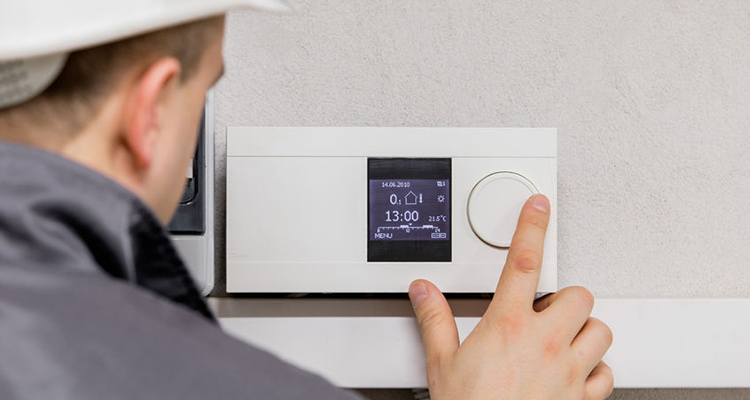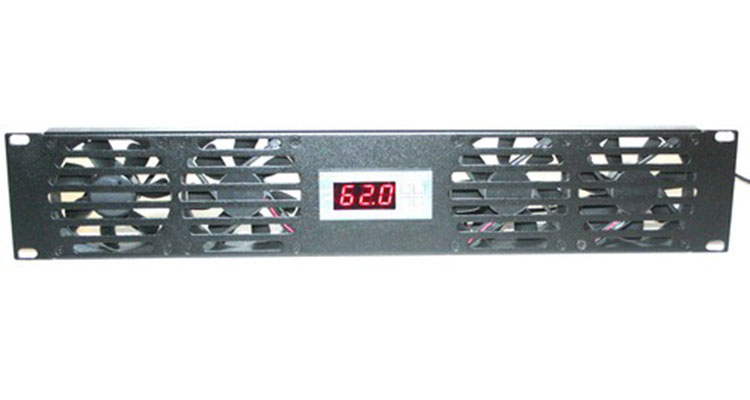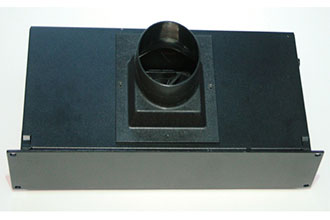You Want Cooling? We’ve Got Tons Of Cooling

Room design that allows for adequate airflow for cinema rooms can be an event more noted in the breach than in the observance.
In needs assessment meetings with potential clients to develop their wish list for the things they want their media or cinema room to do, they inevitably focus on things like how big a projection or flat panel screen they want, or just how many speakers and subwoofers they think they’re going to need to impress their friends.
If they’re really going all out, it may have occurred to them to think about reclining leather theater seats with cup holders even before sitting down in the ones in your showroom.
One thing you’ll never hear from your clients is that ensuring adequate airflow and cooling in their cinema room is something they’ve mentally budgeted for.
Assuming that they’ve come to you, the AV pro, early enough in new construction or a renovation, and that you are being asked to do a cinema room in grand style, as a trusted professional can broach the subject early, and assert your expertise on the subject. Details like this are what separate the consummate professionals from the guys who’ve decided on a whim to be “installers.”
Most clients aren’t going to immediately see the importance of this. However, they’ll get it once you paint a picture for them: When you cram a dozen adults into a well-insulated/soundproofed fifteen by twenty-five foot room with no windows, it’s going to get downright sultry.
And that’s even before you factor in the heat from any electronics that are installed in the room. When speaking to the consequences of nonexistent HVAC design I’ve gotten a lot of mileage about the story from back at a Hi-Fi shop I used to work at.
We did a small in-store renovation that included framing out three sound rooms in the back of the store. None of them were ventilated. At one time, the middle room had a big projector, an early-generation plasma TV and multiple monster Class-A multi-channel amplifiers on display.
It was like a greenhouse in those rooms, a constant 95-degrees plus. Not good planning at all, and not a pleasant shopping environment. But as they say, good judgement comes from experience, and experience comes from bad judgement.
This is a subject that I enjoy unpacking, but to keep it brief for now, in order to get your HVAC needs met from the builder or your client’s general contractor you need to speak their language.
That means you need to be conversant with CFM (cubic feet per minute), BTUs (British Thermal Units) and Tons of Cooling. HVAC installers will generally want to know about how many Tons of Cooling you need, so after you calculate the total heat load in BTUs in your room, you need to express it in Tons of Cooling. The easy part is that 1 Ton of Cooling = 12,000 BTU.
Unless you plan to branch out into HVAC installs (and I’m not judging you if you do), everything you need to know can be learned on your own time. There are plenty of wikis and online reference sites to help you determine total BTUs. Hunt around and you’ll find some that have the references and formulas you need most. Here’s a good basic one right here.
Don’t forget to factor the time it took to calculate this into your schedule of design fees. Once you know how much cooling your client’s media room requires, it’s a simple conversation with the site supervisor for the client’s builder or with their general contractor. This kind of forethought will lead to a finished installation will be even better than the client expected, and further cement your company’s reputation as AV pros to be reckoned with.
—-
While the field of HVAC is vast, a quick primer is always a good start to embarking upon learning new things.
For newcomers to AV design, thinking about integrating automation controllers with HVAC (Heating, Ventilation, and Air Conditioning Systems) can be intimidating. Personally, while working as a designer the majority of the sleepless nights I’ve had, worrying about maybes and what-ifs have involved HVAC integration.
While HVAC principles aren’t complex, they’re different enough from the audio and video that we’re all used to that they can seem daunting. When you begin to dig into how to control your client’s HVAC systems, you’ll find it straightforward and actually kind of interesting. Here are some things I’ve learned that can help you on your way.
Because HVAC isn’t very complex means that with some study, you can become conversant in it in a short time.
In addition to vendor specific training, there are a plethora of free online resources that offer a good grounding in the basics of how HVAC systems work. One good introduction to the subject that I like to recommend is HVAC For Beginners.
The following are some tidbits about HVAC design that you might find interesting.
It’s typically either the electrician or the mechanical guy that will drop the lines for the home’s thermostats and temperature sensors, but on a home automation project, it’s probable that your installers will be the ones doing so.
The standard on-wall height for mounting thermostats and temperature sensors is 60-inches/150 centimeters from the floor. There are two reasons why: First, higher or lower mountings will give less accurate temperature readings. Second, a thermostat that is higher or lower will be less convenient for people of average height to read and adjust.
Another important detail is the proper location to install slab sensors for in floor heating. In the case of in floor heating that’s encased in concrete slab, the mechanical contractor installs metal conduit into the slab for the placement of the sensors. That way, if one fails (and they sometimes do), it can be easily fished out and replaced without needing a jackhammer. In that instance, sensor location has already been decided for the integrator.
In the case of subfloor heating, where the heating pipes are run beneath the floor boards, integrators need to run their lines to the heating location, and mount the slab sensor equidistant from the heating pipes — too close to a pipe, and the temperature reading will be inaccurately high.
Here’s one that I learned the hard way: Know the resistance of your temperature sensors. Ideally, you should be specifying both the thermostats and the temperature sensors that your automation vendor either sells or recommends.
Never, under any circumstance mix and match units from two different brands unless you know their complete specifications and have tested them together in the office.
The reason why is that temperature sensors are electrical devices and have resistance, and that can vary from brand to brand. Many readily available temperature sensors have a resistance of 10 kΩ, while others can be as much as 15 kΩ or as little as 100 Ω. Learning that the hard way was a rude awakening.
Automation thermostats with inputs for remote sensors are calibrated based on a known, fixed resistance. Input from a sensor whose resistance is as much as 10 times greater or lesser will mean grossly inadequate readings and an HVAC system that doesn’t work.
For AV pros, I’d argue that while knowing how HVAC works in order to be able to how to control it is important, being able to effectively communicate the automation’s requirements to the HVAC guys will go a long way towards being effective on the jobsite. That means talking their language.
Let’s apply this to what we already know. A room full of people watching football means greater occupation density than an average room, and can create a close, overly warm, uncomfortable atmosphere.
In order to get the HVAC needs met from the mechanical contractor AV Pros need to be conversant with CFM (cubic feet per minute), BTUs (British Thermal Units) and Tons of Cooling.
HVAC installers will generally want to know about how many Tons of Cooling are needed, so after calculating the total heat load in BTUs in the room, it needs to express it in Tons of Cooling. The easy part is that 1 Ton of Cooling = 12,000 BTU. Fortunately, there are plenty of online reference sites to help determine total BTUs. Once again, Google is your friend.
There’s nothing to fear about HVAC, put in some solid time studying the fundamentals, and it will become just one more area of mastery for your AV company.




